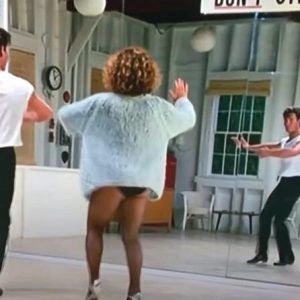The Mystery of the Missing School Bus: A Chilling Discovery in Hallstead County
In Hallstead County, the fog has always been heavy — clinging to pine trees, drifting under porch lights, muffling the quiet hum of everyday life. But for nearly 40 years, that fog also symbolized something far darker: the unsolved disappearance of 15 schoolchildren who vanished without a trace on a spring morning in 1986.
That mystery resurfaced just after 7 a.m. yesterday.
Deputy Sheriff Lana Whitaker was pouring her morning coffee when a call came in: a construction crew near Morning Lake had uncovered something unusual while digging — a crushed, dirt-covered yellow school bus. License plates matched a long-cold missing persons case.
Lana didn’t need notes. She knew the case by heart. In 1986, she’d been home sick with chickenpox, watching from her bedroom window as her classmates climbed aboard that bus for a field trip to Morning Lake. It was the last time anyone saw them.
She drove through the thick fog, past the abandoned ranger station, to the edge of the old summer campgrounds. The memories came rushing back — the lake, the cabins, the excitement of the last field trip before summer.
The construction crew had cleared a perimeter. Beneath the mud, rusted metal from the long-lost bus peeked through. The emergency exit was open. Inside was mold, decay, and haunting silence — empty seats, seatbelts still fastened, a pink lunchbox, and a child’s moss-covered shoe. But there were no bodies.

Taped to the dashboard, Lana found a class list written by their teacher, Miss Delaney, who also vanished that day. At the bottom, in red marker, were five haunting words: We never made it to Morning Lake.
It wasn’t long before the state team was on-site. Lana went straight to the records office, pulling the original sealed case file: Field Trip 6B, Holstead Ridge Elementary, May 19, 1986. Stamped on the final page: MISSING PERSONS PRESUMED LOST. NO EVIDENCE OF FOUL PLAY.
But that stamp never felt right to the town.
Theories had swirled for decades. The bus driver, Carl Davis, was a recent hire who vanished along with the kids. The substitute teacher, Ms. Atwell, had no traceable history before or after that day. Some believed the bus crashed into the lake. Others whispered about cults, abductions, or cover-ups. But nothing was ever proven.
Then came the call from the hospital.
A woman had been found by a couple fishing near the dig site. Malnourished, barefoot, and disoriented, she claimed she was 12 years old. The name she gave: Nora Kelly, one of the missing children.
When Lana entered the hospital room, the woman looked up and whispered, “You got old.” Her green eyes were unmistakable. “You were supposed to come,” Nora said. “You had chickenpox.”
Nora remembered everything — including being told no one would come for them.
Days of investigation followed. No human remains were found in the bus, but behind a panel was a photo of children in front of a boarded-up building. In the shadows stood a bearded man.
Nora recalled fragments: a strange bus driver, a detour, being told the lake “wasn’t ready.” She described waking in a barn with windows covered, clocks always reading Tuesday, and being given a new name. “Some kids forgot home,” she said. “I didn’t.”
Lana traced those memories to an abandoned barn once owned by a man named Avery. There, she found a bracelet belonging to another missing child — Kimmy Leong — and walls etched with the children’s names. In a box, Polaroids showed the kids eating, sleeping, crying — each labeled with a new name like Glory, Silence, or Dove.
Nora identified the building from the earlier photo as Riverview Camp, a long-abandoned retreat bought in 1984 by a private trust. Lana found it — and outside, tiny footprints. Inside, she met a boy no older than ten who called himself Jonah. He didn’t know his real name. “They took it,” he said. “Are you here to take me away?”
Back at the station, Jonah recognized faces from the 1986 yearbook — and even remembered Lana.
More breaks followed. A second photo from the bus revealed four children around a fire. One was identified as Aaron Develin, now a quiet man living in town. When confronted, he admitted: “Some of us wanted to stay. I believed in it… for a long time.”
Aaron led Lana to what he called the original sanctuary, where the children were first taken. Beneath rubble, Lana discovered a cassette player, a child’s drawing, and a message: We are still here.
He pointed her to another location — Haven, where the younger ones were moved after a fire. Beneath a lightning-struck tree, Lana found a hidden hatch. Inside was a network of underground rooms: bunk beds, drawings, fifteen desks, and a locked box containing lesson plans titled: Obedience is Safety. Memory is Danger.
One name was repeated again and again in records: Cassia. A mural showed her running through the trees.
Eventually, Cassia was identified — now living as Maya Ellison, a quiet bookseller in town. When Lana showed her the mural, Maya broke down. “I thought she was just a story I made up. I didn’t think she was me.”
Nora, Kimmy, and Maya were reunited. They spoke of what they remembered — and of what others forgot. Some had died. Some ran. And some, they believed, were still out there.
Today, a sign stands at Morning Lake:
“In memory of the missing. For those who waited in silence — your names are remembered.”
And in the town of Hallstead County, the fog still rolls in, but now it carries a little less silence — and a little more truth.





